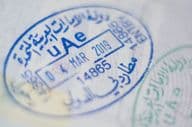Dubai to Transform Traffic with New Bridges

A New Era Begins for Dubai's Transportation: New Bridges and Junctions to Be Built from 2026
Dubai has reached another milestone in the development of its transportation infrastructure: Transformation works on the iconic World Trade Centre roundabout are now 40% complete, with the first two new bridges expected to open by January 2026. The project's ultimate goal is to drastically reduce traffic congestion, shorten travel times, and ensure smoother service to Dubai's downtown.
From Roundabout to Overpass Junction
The World Trade Centre roundabout is currently one of Dubai's most crucial traffic nodes, connecting five major roads: Sheikh Zayed Road, Sheikh Khalifa bin Zayed Street, Sheikh Rashid Street, 2nd December Street, Zabeel Palace Street, and Al Majlis Street. The ongoing project's aim is to transform the current roundabout into a surface-level, directed intersection, complemented by five new bridges totaling 5,000 meters in length.
The first phase will be completed in January 2026, with the opening of two new bridges directing traffic from 2nd December Street to Al Majlis Street and Sheikh Rashid Street. These bridges alone can significantly ease the daily commute.
More Connections by the End of 2026
According to the project's next phase, the bridge connecting Sheikh Zayed Road and Sheikh Khalifa bin Zayed Street will be completed by March 2026, followed by two more bridges set for completion by October, directing traffic from Sheikh Rashid Street and Al Majlis Street back to 2nd December Street.
After the entire development concludes, the new system will double the junction's capacity, reducing average wait times from 12 minutes to just 90 seconds and shortening travel time from Sheikh Zayed Road to Sheikh Khalifa bin Zayed Street from six minutes to one.
Al Mustaqbal Street Development
Simultaneously, another major project, the development of Al Mustaqbal Street, is underway and expected to be completed by 2027. This development involves expanding the current three lanes to four in both directions, increasing traffic capacity from 6,600 vehicles/hour to 8,800 vehicles/hour. This expansion is projected to cut travel time by more than half, from 13 minutes to six.
The Al Mustaqbal Street project includes constructing three tunnels totaling 1,100 meters in length at the intersection of Trade Centre Street and Al Mustaqbal Street, along with a 400-meter long, two-lane bridge to facilitate traffic from Dubai World Trade Centre towards the intersection of Zabeel Palace Street and Al Mustaqbal Street.
Throughout the entire project, a 3,500-meter stretch of Al Mustaqbal Street will be expanded to four lanes in both directions, and a new pedestrian bridge will be built over Sukuk Street, upgrading the impacted junctions at the intersections of Trade Centre Street and Exhibition Street.
Infrastructure and Efficiency
Together, the two projects encompass a total of seven bridges and three tunnels, extending over 6,500 meters. The investment is valued at 1.3 billion dirhams, affecting about seven key residential and development areas, including the Dubai World Trade Centre, the Dubai International Financial Centre (DIFC), the Emirates Towers, the Museum of the Future, and Downtown Dubai.
Estimates suggest the projects will benefit more than one million residents and visitors, potentially reducing travel time by up to 75% on the affected routes.
Dubai's transportation network currently spans over 25,000 lane-kilometers, serving more than 3.5 million vehicles daily. The road expansion is happening at a rate of 829 lane-kilometers annually, more than double the global average, which stands at approximately 400 lane-kilometers.
Economic Impacts and Real Estate Advantages
The transportation developments are not only easing traffic but also have significant economic impacts. Through the construction of roads, metro lines, and new connections, the value of the affected properties has increased by 6% to 16%. The Dubai Roads and Transport Authority (RTA) plans to execute 72 new projects between 2025 and 2027, mainly aiming to service strategic development zones, with an estimated cost of 35 billion dirhams.
The investments offer not just short-term solutions to current traffic difficulties but also ensure a sustainable, well-planned transportation network for Dubai's rapidly growing urban landscape in the long run.
Final Thoughts
Dubai once again demonstrates its ability to design and implement world-leading transportation projects. The development of the World Trade Centre roundabout and Al Mustaqbal Street is not only an engineering feat but a well-considered urban planning step that strengthens the city's livability, economic attractiveness, and sustainability. With new bridges, tunnels, and lane expansions, faster, more convenient, and safer transportation options will open up for both residents and visitors in the future of Dubai.
(Source: Based on a statement from the Roads and Transport Authority (RTA).)
If you find any errors on this page, please let us know via email.


